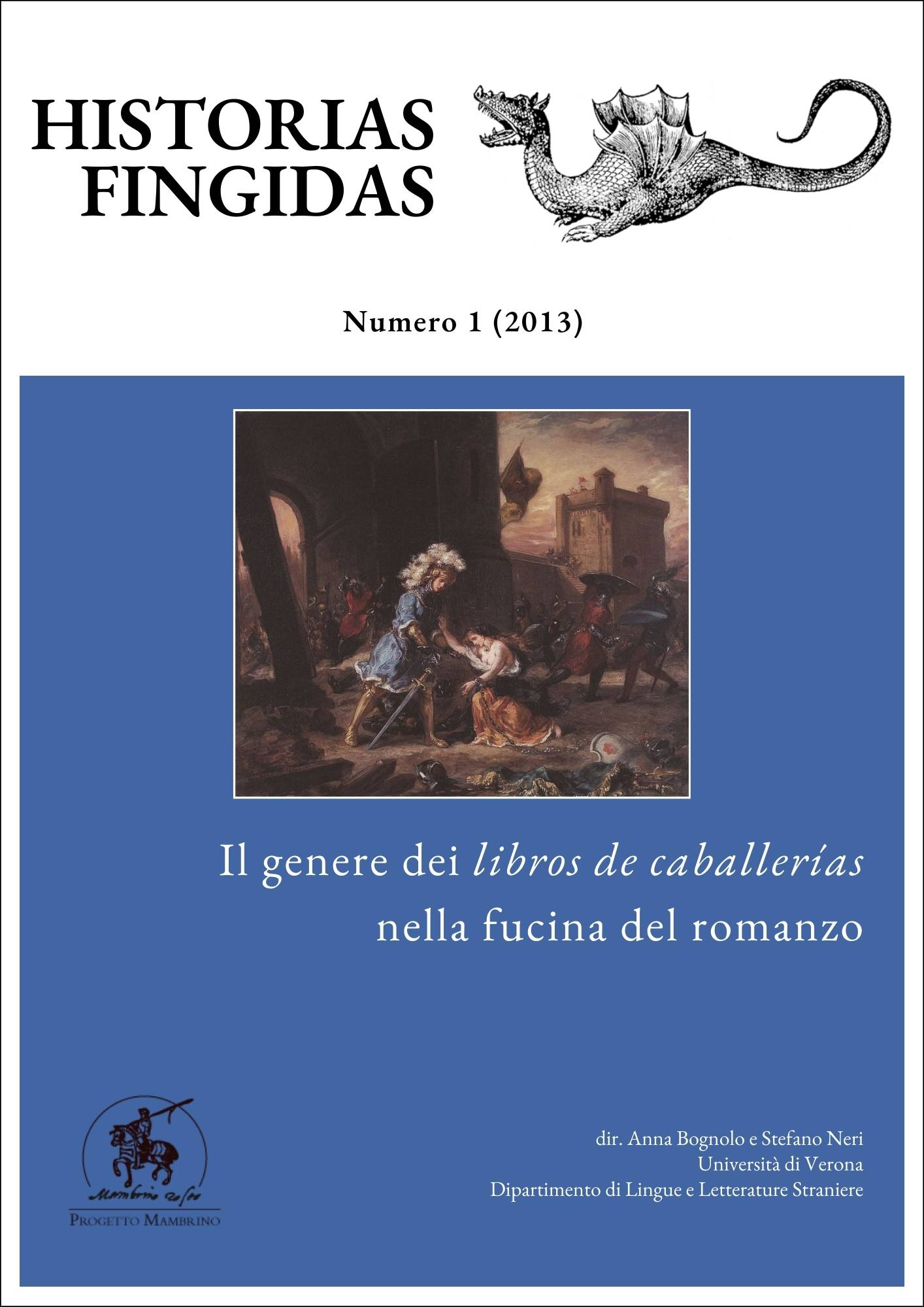Bases folklóricas y culturales en las relaciones amorosas entre moros y cristianos en el Palmerín de Olivia (libros I y II)
DOI:
https://doi.org/10.13136/2284-2667/2Palavras-chave:
libros de caballerías, moros, cristianos, mujer, amorResumo
Durante siglos, la convivencia entre moros y cristianos ha generado abundante literatura. En este trabajo se da una vuelta de tuerca más al tema tomando como referencia dos episodios amorosos del Palmerín de Olivia en los que el amor como cautiverio y como herida. En ambos las relaciones afectivas entre los credos son desiguales porque son esporádicas y encaminadas a perfilar las virtudes o defectos del caballero. Se recurre a las constantes de la literatura de la época, haciendo caso omiso de los problemas (y soluciones) del momento, que se eluden imprimiendo a los textos un pensamiento patriarcal y católico.
During centuries, Muslims and Christians coexistence has generated a huge amount of literature. This works tries to give a turn to the subject taking as a reference two amatory episodes of the Palmerín of Olivia in which love is represented as captivity and wound. In both, the affective relations between the creeds are irregular because they are sporadic and directed to outline the virtues or defects of the knight. The novel refers to the literary tradition of the period and doesn’t take in consideration the problems (and solutions) of the contemporary age.
Downloads
Publicado
Edição
Secção
Licença
Direitos de Autor (c) 2013 Ana Carmen Bueno Serrano

Este trabalho encontra-se publicado com a Licença Internacional Creative Commons Atribuição-NãoComercial 4.0.
Gli autori che pubblicano su questa rivista accettano le seguenti condizioni:- Gli autori mantengono i diritti sulla loro opera e cedono alla rivista il diritto di prima pubblicazione dell'opera, contemporaneamente licenziata sotto una Licenza Creative Commons - Attribuzione - Non Commerciale che permette ad altri di condividere l'opera indicando la paternità intellettuale e la prima pubblicazione su questa rivista a fini non commerciali .
- Gli autori possono aderire ad altri accordi di licenza non esclusiva per la distribuzione della versione dell'opera pubblicata (es. depositarla in un archivio istituzionale o pubblicarla in una monografia), a patto di indicare che la prima pubblicazione è avvenuta su questa rivista.
- Gli autori possono diffondere la loro opera online (es. in repository istituzionali o nel loro sito web) prima e durante il processo di submission, poiché può portare a scambi produttivi e aumentare le citazioni dell'opera pubblicata (Vedi The Effect of Open Access).

